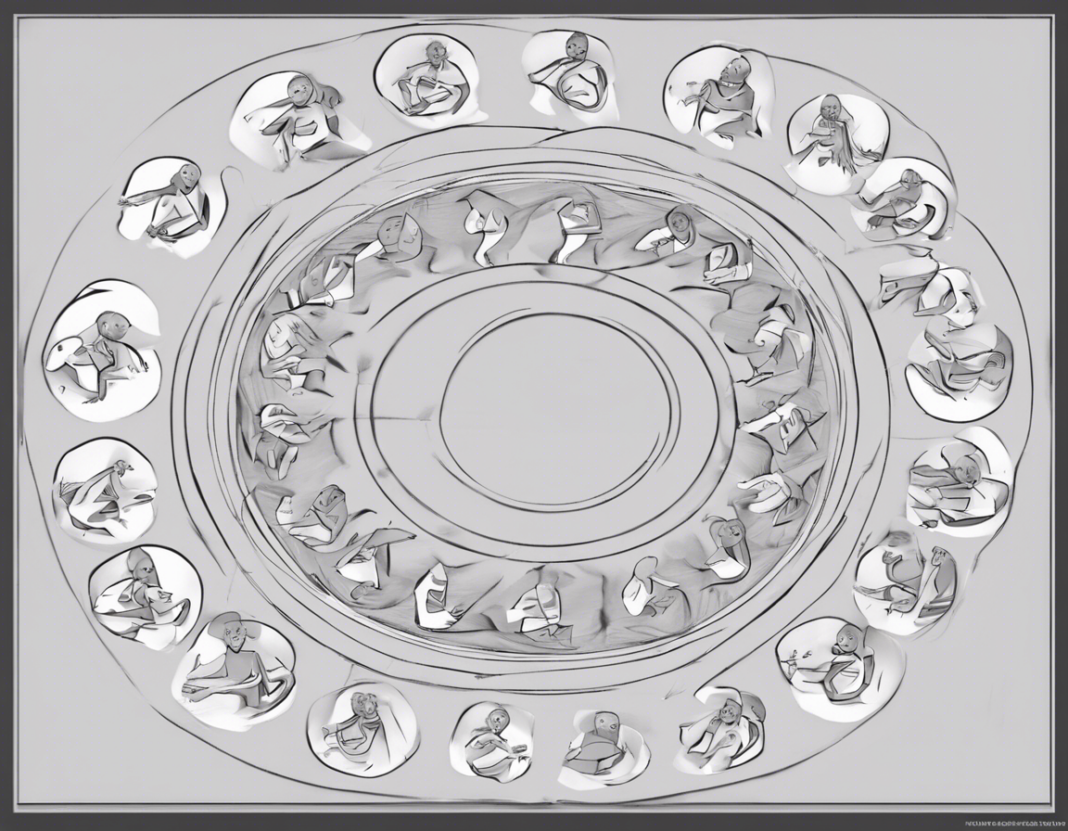When we think about shapes, one of the most basic and fundamental shapes that comes to mind is the circle. It is a shape that we encounter in our everyday lives, from the wheels on our cars to the plates we eat from. However, unlike polygons such as triangles, squares, and pentagons, a circle is not made up of straight line segments. Instead, it consists of an infinite number of points equidistant from a central point, forming a curve.
Understanding the Circle:
A circle can be defined as the set of all points in a plane that are at a given distance (the radius, denoted by "r") from a given point (the center). The distance around a circle, known as the circumference, can be calculated using the formula C = 2πr (where π is a constant approximately equal to 3.14159). Another key measurement associated with a circle is the diameter, which is a line segment that passes through the center of the circle and whose endpoints lie on the circle. The diameter is twice the length of the radius (d = 2r).
A Circle and Its Sides:
When we talk about the number of sides in a shape, we typically think of polygons where the sides are straight line segments. Polygons have a clear and distinct number of sides – a triangle has 3 sides, a square has 4 sides, a pentagon has 5 sides, and so on. However, when it comes to a circle, the concept of sides becomes less straightforward.
A circle technically has an infinite number of sides. This might sound perplexing at first, especially if we visualize a side as a straight line segment connecting two points. In a circle, if you were to connect any two distinct points on the curve, you would have a line segment – a side of the circle. Since there are infinite points along the curve, there are infinite possibilities to connect any two of these points, resulting in an infinite number of sides.
Exploring the Idea Further:
To better grasp the concept of a circle having infinite sides, consider the following analogy:
Think of a polygon, like a regular hexagon. A regular hexagon has 6 equal sides – each side connecting two vertices of the shape. As you increase the number of sides of the hexagon, moving closer to a circle, the shape becomes smoother. Imagine continuously adding more sides to the hexagon, increasing the number of vertices and straight sides.
As you approach an infinite number of sides, the polygon begins to resemble a circle more and more. The straight sides start to smooth out, and the shape becomes more rounded until you reach a point where it is no longer a polygon but a circle – a shape with an infinite number of sides.
Frequently Asked Questions (FAQs):
1. Can a circle be considered a polygon?
No, a circle is not considered a polygon because it does not consist of straight line segments connecting vertices. It is a curved shape formed by an infinite number of points equidistant from a central point.
2. How do we calculate the circumference of a circle?
The circumference of a circle can be calculated using the formula C = 2πr, where r is the radius of the circle.
3. What is the relationship between the diameter and radius of a circle?
The diameter of a circle is twice the length of the radius, so the diameter (d) is equal to 2 times the radius (r), or d = 2r.
4. Are there any practical implications of a circle having infinite sides?
While the concept of a circle having infinite sides is more theoretical than practical, it helps us understand the fundamental nature of circles and their unique properties.
5. Can you have a circle with a finite number of sides?
No, a circle, by definition, has an infinite number of sides due to its continuous and curved nature.
In conclusion, while it may seem counterintuitive to think of a circle as having sides, understanding that a circle consists of an infinite number of sides helps us appreciate its smooth and continuous nature. This unique characteristic sets the circle apart from polygons and makes it a fundamental shape in mathematics and our everyday world.

